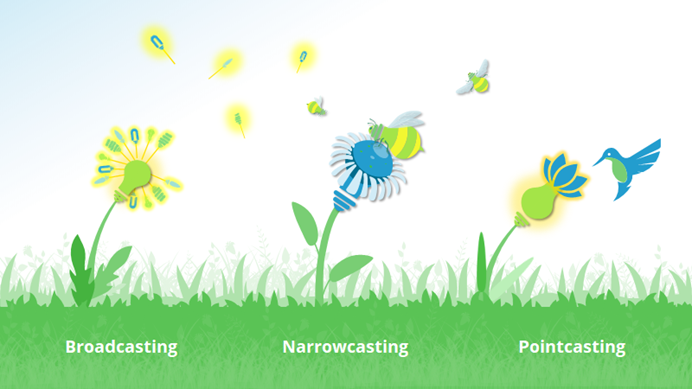How much strategy goes into your organization’s thought leadership efforts?
Most of the time, thought leadership practitioners have three types of deployment strategies:

Broadcasting an idea in all directions is an inefficient strategy. It’s like trusting the wind to deliver your thought leadership to the right place. Broadcasting works for content marketing and brand building. But it isn’t a strong strategy for thought leadership; it’s expensive, and inherently inaccurate.
Narrowcasting ideas is a better strategy for thought leadership. Instead of trying to reach everyone, you focus on pollinators: the decision makers and influencers who can help you take your ideas to scale. Narrowcasting requires you to understand your target audience and serve your ideas in a way that they find deeply relevant. Narrowcasting creates a cooperative relationship, where people want to use and share your ideas.
Pointcasting hand-delivers your thought leadership to one (or a few) important individuals. When you pointcast, you create and deliver thought leadership specifically suited to a single VIP. You shape your thought leadership for their use, and they help you propagate your ideas. Pointcasting can produce massive impact. However, this strategy can have a high cost-per-learner.
So, how do broadcasting, narrowcasting, and pointcasting apply to budgeting?
Think about the thought leadership campaigns you’re planning for 2022.
________ % of TL budget applied to broadcasting activities.
________ % of TL budget applied to narrowcasting activities.
________ % of TL budget applied to pointcasting activities.
While there’s no “golden ratio” for these three methodologies, most organizations:
- Overinvest in broadcasting activities
- Underinvest in pointcasting activities.
Think about it strategically, and ask yourself — how are you going to invest your thought leadership budget?

